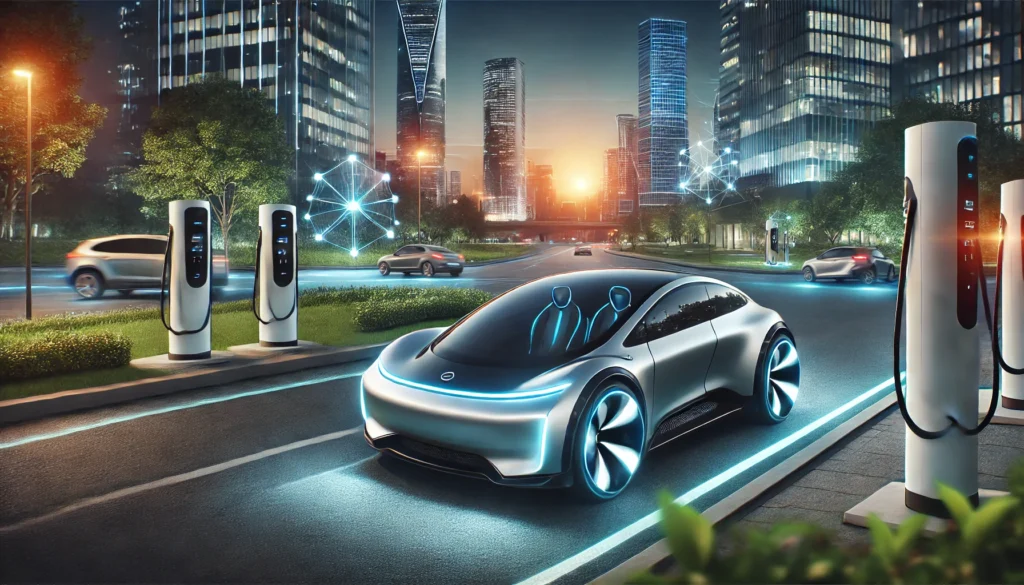Introduction
The world stands on the brink of a transportation revolution. With the alarming rise of climate change concerns and the continuous depletion of fossil fuel resources, the focus has dramatically shifted towards sustainable alternatives. Electric vehicles (EVs) have emerged as the frontrunners in this transformative journey, promising not only to reduce our carbon footprint but also to redefine how we perceive mobility. This article delves deep into the future of electric vehicles, exploring their evolution, current trends, and the exciting innovations that lie ahead.
The Evolution of Electric Vehicles
Electric vehicles have come a long way since their inception. Their journey is marked by periods of innovation, decline, and a remarkable resurgence in the modern era. Understanding this evolution helps us appreciate the technological advancements and market dynamics that shape today’s EV landscape.
Early Beginnings of Electric Vehicles
The concept of electric vehicles dates back to the early 19th century. Innovators like Thomas Davenport and Robert Anderson experimented with primitive electric motors and battery technologies, laying the groundwork for future developments. Despite these early efforts, EVs struggled to compete with gasoline-powered vehicles due to limitations in battery life and power.
Revival and Modernization
The late 20th and early 21st centuries saw a renewed interest in electric vehicles. Environmental concerns, coupled with advancements in battery technology, spurred a wave of innovation. Companies like Tesla revolutionized the market with high-performance electric cars, proving that EVs could be both efficient and desirable. This revival marked the beginning of a new era in transportation, with electric vehicles poised to dominate the future.
Current Market Trends
The electric vehicle market is rapidly evolving, driven by consumer demand, technological advancements, and supportive government policies. Understanding these trends is crucial for anticipating the future trajectory of EVs.
Leading Manufacturers in the EV Market
Several companies are at the forefront of the electric vehicle revolution. Tesla, Nissan, and General Motors are among the top players, constantly pushing the boundaries of what’s possible with electric mobility. Their innovations and strategic market moves set the pace for the entire industry.
Innovative Technologies in EVs
Technological innovation is the lifeblood of the electric vehicle industry. From battery advancements to autonomous driving capabilities, these technologies are transforming how we drive and interact with our vehicles.
Battery Technology Advancements
One of the most critical components of an electric vehicle is its battery. Recent advancements in lithium-ion batteries, solid-state batteries, and other energy storage technologies have significantly improved the range, efficiency, and safety of EVs. These developments are crucial for the widespread adoption of electric vehicles.
Autonomous Driving Capabilities
The integration of autonomous driving features into electric vehicles is a game-changer. Companies like Tesla, Waymo, and traditional automakers are investing heavily in developing self-driving technologies. These advancements promise to enhance safety, reduce traffic congestion, and make transportation more efficient.
Sustainable Materials and Manufacturing
The shift towards electric vehicles also brings a focus on sustainability in manufacturing. Automakers are increasingly using eco-friendly materials and processes to reduce the environmental impact of vehicle production. This commitment to sustainability extends from the sourcing of raw materials to the end-of-life recycling of EV components.
Charging Infrastructure Developments
A robust charging infrastructure is essential for the mass adoption of electric vehicles. Recent developments in fast-charging networks, wireless charging, and home charging solutions are making it more convenient than ever to own and operate an electric vehicle. These advancements are crucial for addressing range anxiety and promoting EV adoption.
Global Policies and Regulations
Governments around the world are implementing policies and regulations to support the transition to electric vehicles. These measures include emission reduction targets, fuel economy standards, and incentives for EV purchases. Understanding these policies is vital for predicting the future growth of the electric vehicle market.
Government Incentives and Subsidies
Government incentives and subsidies play a significant role in encouraging consumers to switch to electric vehicles. Tax credits, rebates, and grants make EVs more affordable and attractive to a broader audience. These financial incentives are critical for accelerating the adoption of electric vehicles and achieving environmental goals.
Environmental Impact of Electric Vehicles
Electric vehicles offer numerous environmental benefits compared to traditional gasoline-powered cars. They produce zero tailpipe emissions, reduce greenhouse gas emissions, and contribute to cleaner air. The transition to electric vehicles is a crucial step towards mitigating climate change and protecting the environment.
Reduction of Greenhouse Gas Emissions
One of the primary environmental benefits of electric vehicles is their potential to reduce greenhouse gas emissions. By shifting from fossil fuels to electricity, particularly from renewable sources, EVs can significantly lower the carbon footprint of transportation. This reduction is essential for meeting global climate targets and ensuring a sustainable future.
Energy Efficiency and Renewable Energy
Electric vehicles are inherently more energy-efficient than internal combustion engine vehicles. They convert a higher percentage of energy from the battery to the wheels, resulting in less energy waste. Additionally, pairing EVs with renewable energy sources like solar and wind power can further enhance their environmental benefits.
Economic Benefits of EVs
Beyond their environmental advantages, electric vehicles offer significant economic benefits. These include cost savings on fuel and maintenance, as well as broader economic growth and job creation in the EV industry.You can also read The Perfect Nielsen Shirt: Your Ultimate Guide to Comfort, Style, and Versatility.
Cost Savings and Maintenance
Electric vehicles are more economical to operate than traditional cars. They have lower fuel costs, as electricity is generally cheaper than gasoline. Additionally, EVs have fewer moving parts, which translates to lower maintenance and repair costs over the vehicle’s lifetime.
Job Creation and Economic Growth
The growth of the electric vehicle industry is creating new jobs and economic opportunities. From manufacturing and battery production to charging infrastructure and software development, the EV sector is driving economic growth and innovation. This expansion is not only beneficial for the environment but also for the economy.
Challenges Facing the EV Industry
Despite the numerous benefits, the electric vehicle industry faces several challenges. Addressing these obstacles is crucial for ensuring the continued growth and success of electric vehicles.
Range Anxiety and Battery Life
Range anxiety, or the fear of running out of battery power, remains a significant concern for potential EV buyers. Advancements in battery technology and the expansion of charging infrastructure are essential for alleviating these fears and making electric vehicles more practical for everyday use.
Initial Costs and Affordability
The initial cost of electric vehicles is higher than that of traditional cars, which can be a barrier for many consumers. However, as battery costs decrease and production scales up, EV prices are expected to become more competitive. Government incentives and subsidies also play a crucial role in making EVs more affordable.
Future Prospects and Innovations
The future of electric vehicles is bright, with numerous innovations on the horizon. From advanced battery technologies to new business models, the EV industry is poised for continued growth and transformation.
Emerging Markets and Global Expansion
Electric vehicles are expanding beyond traditional markets in North America and Europe. Emerging economies in Asia, Latin America, and Africa are becoming significant players in the EV market, driven by urbanization, environmental concerns, and government policies.
Integration with Smart Grids and IoT
The integration of electric vehicles with smart grids and the Internet of Things (IoT) is a game-changer. Smart grids enable more efficient energy use and management, while IoT technologies enhance vehicle connectivity and user experience. This integration is set to revolutionize the way we interact with our vehicles and energy systems.
Conclusion
The future of electric vehicles is undoubtedly exciting. With continuous advancements in technology, supportive policies, and growing consumer demand, electric vehicles are set to transform the transportation landscape. They offer a sustainable, efficient, and economically viable alternative to traditional cars, paving the way for a cleaner and greener future.
FAQs
What are the main benefits of electric vehicles? Electric vehicles offer numerous benefits, including reduced greenhouse gas emissions, lower fuel and maintenance costs, and improved energy efficiency.
How do electric vehicles help the environment? Electric vehicles produce zero tailpipe emissions and can significantly reduce greenhouse gas emissions when powered by renewable energy sources. This contributes to cleaner air and a reduction in climate change impacts.
Are electric vehicles more expensive than traditional cars? While the initial cost of electric vehicles is higher, they offer lower operating costs over their lifetime due to cheaper fuel and maintenance. Government incentives and subsidies also help make EVs more affordable.
What is range anxiety and how is it being addressed? Range anxiety is the fear of running out of battery power while driving. It is being addressed through advancements in battery technology, increasing vehicle range, and expanding the charging infrastructure.
What role do government incentives play in EV adoption? Government incentives, such as tax credits and rebates, make electric vehicles more affordable and attractive to consumers. These incentives are crucial for accelerating EV adoption and achieving environmental goals.
What are the future prospects for electric vehicles? The future of electric vehicles is promising, with continuous innovations in battery technology, autonomous driving, and smart grid integration. The global expansion of EV markets and supportive policies further enhance their growth prospects.



